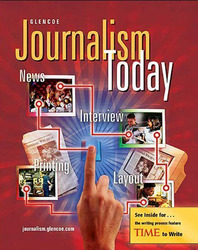
Journalism TodayChapter 15: Writing for Radio and TelevisionOverviewRadio and television play an important role in our everyday lives. There are few places you can go where you're not near a radio or TV set. Broadcasts even come through your computer and over the Internet. Many avenues offer students experience in broadcasting and opportunities to learn how to do broadcast writing. Depending on resources available, students can, for example, prepare stories in broadcast format, using a tape recorder or video camera, to play in class for other students to critique. They may also use the school intercom system to broadcast the day's news and announcements. In some cases students may be permitted to operate a complete radio or television station (licensed or closed circuit) or to prepare news reports for use by local radio or television stations. Broadcast writing must be clear and concise. People hear things differently from how they read them. A story on the radio usually can't be "reread" if someone didn't hear it correctly. Writing for broadcasting starts with the same principles of good journalism as writing for print. You must research and dig deep into the story. Focus on what makes it interesting and how to create a visual image for the listener or viewer. Even on television, words must be well chosen to complement the pictures. Among the many basic story patterns that broadcast journalists use are cause and effect, problem-solution-results, and comparison. When writing copy, find the "nugget"—that bit of information that stands out. Finding the nugget doesn't mean writing cute copy; it means writing interesting and unique copy. Whenever possible, write in the active voice. Radio and television provide immediacy. The listener is "there"—at the trial, next to the damage caused by the hurricane, at the football game, at the scene of the accident, on the floor of the student council meeting. The listener is hearing the words of people making the news as part of your newscast. Some of the many staff jobs at scholastic broadcasting stations—such as program director, sports director, and technical director—may lead to careers in the ever-expanding field of broadcast journalism. |  |















